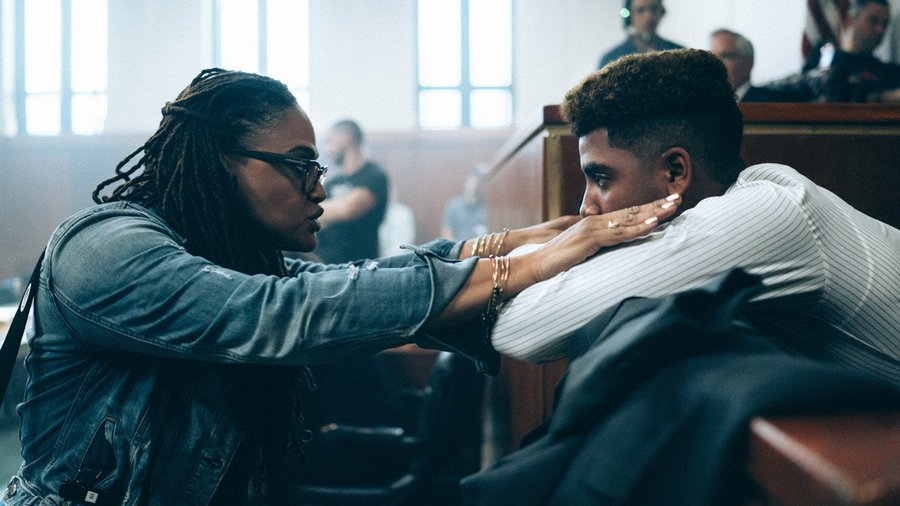[ad_1]
Apparently, no one was ready for Ava DuVernay’s recent series, When They See Us. Across social media, discourse about the movie ranges from whether or not people would tune in at all to how weighty and emotionally stirring it was to watch. Judge Greg Mathis posted a disturbingly tearful picture on Facebook expressing his angst about the film:

An extremely angry Twitter user tweeted their reaction upon watching:
just started watching when they see us pic.twitter.com/aTiNzpvxIe
— k8 (@gastationcoffee) June 17, 2019
And Kandiss Edwards, a Georgia educator, told BLACK ENTERPRISE that post-traumatic syndrome is why she wouldn’t watch the film immediately:
I knew the Kalief Browder story before I watched the documentary about his suicide. What I didn’t realize was how the story would cling to the marrow of my bones and stay with me. Kalief’s story gave me anxiety for weeks after watching. I’m determined to be more careful this time around with When They See Us. I will watch the movie, but first I have to make sure I am emotionally prepared.
BE‘s own Alfred Edmond penned an op-ed on why he may never watch stating, “I’ve reached a stage of my life where I do my best to avoid unnecessarily re-traumatizing experiences.”
The film gives a nuclear lens into the lives of Yusef Salaam, Antron McCray, Raymond Santana, Korey Wise, and Kevin Richardson, who are widely known as “The Central Park Five,” and the hell they experienced as young teens wrongfully accused and convicted of assaulting, raping, and sodomizing a white woman jogger, in New York City in 1989.
In an effort to bring justice to a victim who was brutalized and robbed of the memory necessary to identify her attackers, the New York State justice system and national mass media made victims of five black men, aged 14-16, in the most callous, coercive, and corrupt way. Sadly, each entity received their props. The news media got its ratings, the NYPD got its confession, the prosecutor, Linda Fairstein, got a conviction and went on to be a top-selling author of crime fiction, the justice system got its contribution to mass incarceration—all off the backs of black and brown boys. Yet, they had also gotten it ass backward. Mathias Reyes confessed to the crime 11 years later. Salaam, McCray, Santana, Wise, and Richardson were each cleared by DNA technology, exonerated and poorly compensated to the tune of $41.3 million by New York State.
DuVernay certainly does her part as she continues to highlight and produce content that brings nuance to injustices suffered by African Americans. Her work deserves our eyes, collective contemplation, and action. While it is understandable, the personal reasons, why many choose not to engage When They See Us, watching is important for the greater good. Support for DuVernay and other social justice warriors is the least we can do. As black people, we must be aware of the aggressive criminalization of black and brown people—which lends a hand to mass incarceration. We must know these stories and be familiar with the entities who benefit from our demise. In the weeks since the miniseries premiered, Fairstein has gotten her share of attention. The former prosecutor has been dropped by her publishing company and forced to resign from her post as a Vassar College trustee—and rightfully so. In another instance, black Columbia law students were successful at forcing another prosecutor’s hand. Manhattan Assistant District Attorney Elizabeth Lederer, who was associated with the Central Park 5 case, is no longer teaching at the law school at students request for her resignation.
New statement released from the @ColumbiaLaw Black Law Students Association
Students call for #CentralPark5 prosecutor Elizabeth Lederer to be fired from her Lecturer in Law position
Also call on the law school to center anti-racism in its curriculum and pedagogy pic.twitter.com/U8By81KWBB
— Barred and Boujee (@AudreLawdAMercy) June 11, 2019
And though these justified actions against Fairstein and Lederer are not exactly justice enough, they do serve as retribution of sorts. And trust, this ain’t karma at all. It is an example that shows that it is not OK to abuse leadership, nor railroad people, particularly when it involves their freedom. It is collective action in the fight against injustice and oppression. It’s how we as a people do our part.
 The ideas and opinions expressed in this article are solely those of the author’s and not necessarily the opinion of Black Enterprise.
The ideas and opinions expressed in this article are solely those of the author’s and not necessarily the opinion of Black Enterprise.
[ad_2]
Source link

